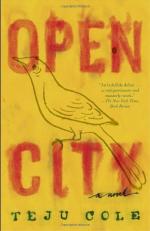
|
| Name: _________________________ | Period: ___________________ |
This test consists of 5 multiple choice questions, 5 short answer questions, and 10 short essay questions.
Multiple Choice Questions
1. What topic does Dr. Saito ask Julius to read the complete articles about, instead of stopping after two paragraphs?
(a) Palestinian rights.
(b) The economy.
(c) Gay marriage.
(d) Environmental activism.
2. How old does Julius say he was when his father died?
(a) 14.
(b) 18.
(c) 22.
(d) 27.
3. Who does Julius ask for help after being beaten and robbed?
(a) Nadège.
(b) His friend.
(c) V.
(d) Mary.
4. What is the man doing in the subway cars, when Julius notices him on the 18th anniversary of his father’s burial?
(a) Inspecting the air conditioning.
(b) Changing the ads.
(c) Inspecting the lights.
(d) Looking for fare-cheats.
5. What was the subject of the cantatas Julius had heard at Lincoln Center, before coming to visit Dr. Saito?
(a) Cinnamon.
(b) Tea.
(c) Coffee.
(d) Tulips.
Short Answer Questions
1. What does Julius say he felt comforted by when he went to the tailor’s shop to get clothes for his father’s funeral?
2. What does the fine weather on the day of the picnic in Central Park make Julius recall?
3. What does the clerk at the post office share with Julius in Chapter 16?
4. What is Julius’ reaction to Dr. Saito telling him that he is ready to die in Chapter 15?
5. Flying back to New York, Julius remembers having seen the city from a similar vantage point: when looking a vast scale model of the city. Where was that scale model exhibited?
Short Essay Questions
1. What was the last time before his fathers funeral that Julius says that he had seen a dead body?
2. How does Julius kill half an hour when he is early to meet Dr. Maillotte?
3. Chapter 11 marks the end of “Part 1: Death is a perfection of the eye.” In what way is this title appropriate to the first 11 chapters?
4. What is Julius’ relationship like with the character he never names, but simply calls “my friend” (179)?
5. What does Julius say his relationship with winter is like?
6. What are Julius’ dreams like, after he hears about Dr. Saito’s bedbugs?
7. What odd scene does Julius witness in the diner, where someone is learning Chinese?
8. How is Julius affected by his thoughts about slavery in New York?
9. How does Julius respond when Moji tells Julius that she has never forgotten him sexually assaulting her when they were students?
10. What does the monument to the negro burial ground make Julius think about the reality of people in the past?
|
This section contains 1,188 words (approx. 4 pages at 300 words per page) |

|




